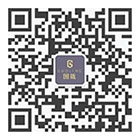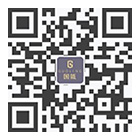Jiao Hanwei: The product design infringement identification
What is product design? Product appearance design refers to the shape or pattern of the product or its combination, as well as the combination of color and shape, pattern to make a new design of beauty and suitable for industrial applications. Product design is an important identification of the source of goods, is the most important part of the brand, but also an important asset for operators. The original product design can not only attract the attention of consumers, but also bring consumers the impulse to consume, and then better realize the commercial value. With the development of economy, the importance of commodity appearance design in commercial operation is becoming increasingly prominent and more and more important. What kind of product design can be patented? Where are the boundaries of product design? The accurate definition of this problem is not only a legal problem, but also a business problem, which determines the realization of business objectives to a large extent. On the one hand, improper protection of the original design patent will lead to product confusion, which will seriously reduce the product sales market; On the other hand, product design infringement should not only compensate for losses, but also bear civil liability such as product removal. The important significance of law is to guide operators to achieve their business objectives in the most appropriate way within a specific boundary. Jiao Hanwei, lawyer of Shanghai Guohillan Law Firm, will discuss the issue of product design patents from two perspectives of law and business, so as to provide reference for operators.
Forms of infringement of product design.
According to China's patent law, a design patent can be enjoyed only after it has been applied for and approved. Only if the product design does not belong to the existing design, and no entity or individual has filed an application with the patent administration department under The State Council for the same design before the date of filing, which is recorded in the patent document published after the date of filing, the designer or applicant may apply to the patent administration department for registration of a patent for design and become the patentee. After the patent right for a design has been granted, no entity or individual may, without the permission of the patentee, exploit the patent, that is, make, offer to sell, sell or import the product patented for its design for production or business purposes. Specifically, the infringement of design patent rights mainly includes the following four forms of conduct: (1) without the permission of the design patentee, manufacturing the design patented product for the purpose of production and business operation; (2) promising to sell a patented design product for the purpose of production or marketing without the permission of the patent owner; (3) Selling a patented design product for the purpose of production or marketing without the permission of the patent owner; (4) Importing a patented design product for the purpose of production or marketing without the permission of the design patentee. The act of offering to sell refers to the intention to sell goods by means of advertising, display in a store cupboard or display at a trade show. In the absence of legitimate defense reasons, without the permission of the design patentee, the implementation of the above acts is suspected to constitute infringement in the sense of patent law.
Identification of identical or similar designs.
In addition to the above forms of infringement, the same or similar product design is one of the key elements for determining infringement. China's patent Law stipulates that the scope of protection of the patent right for designs shall be subject to the design of the product expressed in the picture or photograph, and a brief description may be used to explain the design of the product expressed in the picture or photograph. Only the same or similar product design may constitute a design infringement, otherwise it does not constitute a design infringement. Whether the design is identical or similar is a process of subjective judgment. How to judge it? According to the relevant provisions of the Trademark Law, when determining whether the design is identical or similar, it shall make a comprehensive judgment based on the design features and the overall visual effect of the design; Design features that are mainly determined by technical functions and features such as materials, internal structures, and subtle differences of products that do not have an impact on the overall visual effect are not considered. The following situations usually have more impact on the overall visual effect of the design: (1) the parts of the product that are easy to be directly observed during normal use are relative to other parts; (2) Design features that distinguish the authorized design from the existing design relative to other design features of the authorized design. Therefore, if there is no difference in the overall visual effect of the two designs, they should be identified as the same; If there is only a slight difference between two design patents and there is no substantial difference in the overall visual effect, the two shall be deemed to be similar. It should be emphasized that judging whether the design is the same or similar should be based on the knowledge level and cognitive ability of the general consumer of the patented design product, and should not be based on the knowledge level or cognitive ability of the operator or professional. This means that on the issue of whether the design is the same or similar, the operator can compare the design from the overall visual effect according to the general consumer's knowledge level and cognitive ability, based on the main design characteristics of the shape, pattern and color in the picture or photo, and then judge whether the design has substantial differences. If there is no substantial difference in the overall visual effect, it is the same or similar design.
Identification of identical or similar products.
When determining the infringement of design patent, whether the products involved are the same or similar is another key element to determine whether the infringement is constituted. Only the same or similar products may constitute a design infringement, otherwise it does not constitute a design infringement. Generally speaking, the same product is easier to identify; Similar products are much more complicated. Judging whether products are similar is a subjective cognitive behavior, how should we judge? According to the relevant provisions of China's patent Law, the determination of whether the product types are the same or similar shall be based on the function, use and use environment of the design product. It should be emphasized here that the International Design Classification Table is a tool for the patent administration department to manage the design patent application documents and literature. It is only a reference factor for judging product categories, and is not a basis for determining similar product categories. If the function, use and use environment of the design product and the accused infringing design product overlap, the design product and the accused infringing design product belong to the same or similar categories of products. If the function, use and use environment of the design product and the accused infringing design product do not overlap, the design product and the accused infringing design product do not belong to the same or similar categories of products.
In summary, does an act constitute a design patent infringement? Operators can be defined according to the above from the form of behavior, whether the design is the same or similar, whether the product is the same or similar. If a design identical or similar to the design patent is used on the same or similar class of product, and there is no legal defense such as patent invalidity, it constitutes an infringement of the design patent right. If the designs are not identical or similar, or if the products do not belong to the same or similar category, there is no infringement. On the basis of the definition of the infringement boundary of design patent, if the operator's design patent is infringed, he should actively exercise his own patent rights and protect his own interests by legal means. If the operator's product design infringes the patent of others, it should correct its own behavior at the first time to avoid legal disputes and realistic losses.







